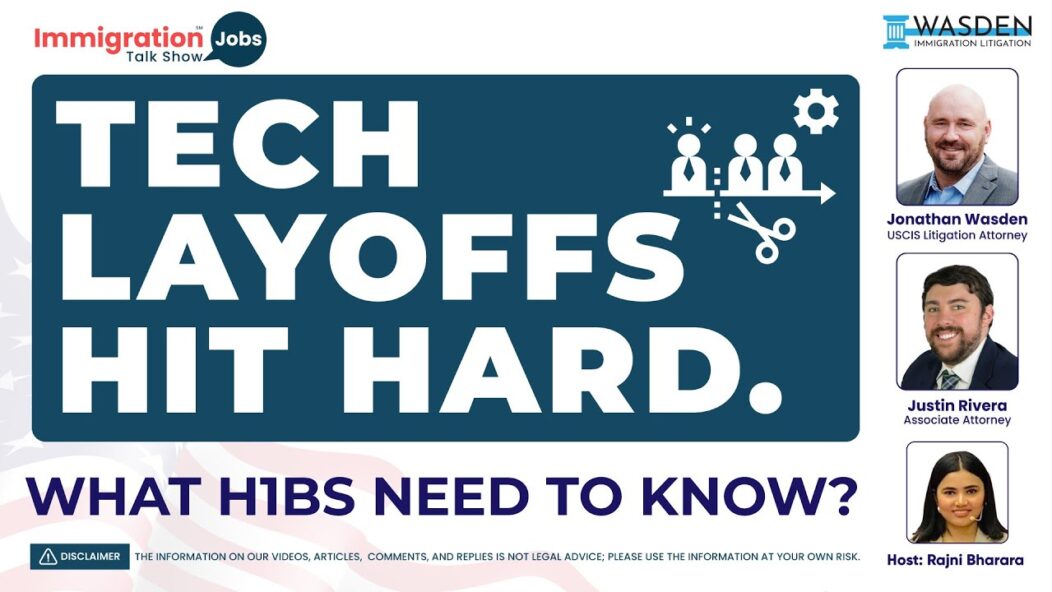Immigration laws in the United States are shaped by both federal and state governments. While federal laws set the groundwork for immigration policies, states have their own laws that can either support or challenge federal regulations. This article examines the history, legal debates, and real-world impacts of these laws at both levels.
Key Takeaways
- Federal immigration laws have evolved significantly over time, starting from early policies to major acts that shape today’s framework.
- State-level immigration laws vary widely, with some states enacting stricter measures while others offer more protections to immigrants.
- The Constitution creates a complex balance of power between federal and state authorities, leading to ongoing legal debates and Supreme Court rulings.
- Local law enforcement agencies play a crucial role in immigration, often collaborating with federal agencies but facing various challenges and criticisms.
- Both federal and state immigration laws have profound effects on communities, influencing economic conditions, social dynamics, and cultural integration.
Historical Context of Federal Immigration Laws
Early Immigration Policies
In the early years of the United States, immigration policies were minimal and largely unregulated. The Naturalization Act of 1790 was one of the first federal laws, allowing free white persons of good character to become citizens after two years of residence. This act set the stage for future immigration policies.
Major Federal Immigration Acts
Several key acts have shaped federal immigration law over the years. The Chinese Exclusion Act of 1882 was the first significant law restricting immigration, targeting Chinese laborers. The Immigration Act of 1924 established national origin quotas, drastically limiting immigration from certain countries. The Immigration and Nationality Act of 1965 abolished these quotas, leading to a more diverse immigrant population.
Evolution Over Time
Federal immigration laws have evolved significantly. Initially, policies were restrictive, focusing on exclusion and quotas. Over time, reforms have aimed at creating a more inclusive system. The 1986 Immigration Reform and Control Act (IRCA) granted amnesty to millions of undocumented immigrants, while the 1996 Illegal Immigration Reform and Immigrant Responsibility Act (IIRIRA) increased enforcement and penalties for illegal immigration.
The evolution of federal immigration laws reflects the changing attitudes and needs of the nation, balancing between restriction and inclusion
State-Level Immigration Legislation
Key State Laws and Policies
State legislators have been active in shaping immigration policies, especially as federal efforts have stalled. Over the past decade, states have enacted an average of 153 laws per year related to immigration. These laws cover a wide range of topics, including education, employment, health, licensing, and public benefits. State-level actions often reflect local priorities and challenges.
Variations Across States
There is significant variation in how states approach immigration legislation. Some states have passed restrictive laws that make it harder for immigrants to live and work, while others have enacted more welcoming policies. For example, certain states have imposed penalties on landlords who rent to unauthorized immigrants and on employers who hire them. Meanwhile, other states have focused on integrating immigrants into their communities by making state licensing and credentialing more transparent and effective.
Case Studies of Specific States
- California: Known for its progressive stance, California has passed laws that provide undocumented immigrants with access to driver’s licenses and in-state tuition for higher education.
- Arizona: In contrast, Arizona has implemented some of the strictest immigration laws in the country, including the controversial SB 1070, which requires law enforcement to check the immigration status of anyone they suspect to be in the country illegally.
- Texas: Texas has taken a mixed approach, with some cities adopting sanctuary policies while the state government has passed laws to ban such practices.
The diversity in state-level immigration laws highlights the complex and often contentious nature of immigration policy in the United States. States are laboratories of democracy, experimenting with different approaches to address the unique needs and challenges of their populations
State-level legislation continues to evolve, influenced by local conditions and the broader national debate on immigration. As states navigate these complexities, their policies will likely continue to shape the lives of immigrants and the communities they join.
Constitutional Framework and Legal Debates
Federal vs. State Authority
The balance of power between federal and state governments in immigration law is a complex and often contentious issue. The U.S. Constitution grants the federal government the primary authority over immigration matters. However, states have increasingly taken on roles in enforcement and policy-making, leading to debates over the limits of state power.
Key Supreme Court Rulings
Several landmark Supreme Court cases have shaped the landscape of immigration federalism. Notable cases include:
- Arizona v. United States (2012): This case struck down several provisions of Arizona’s immigration law, affirming federal supremacy in immigration enforcement.
- Plyler v. Doe (1982): The Court ruled that states cannot deny free public education to children based on their immigration status.
Ongoing Legal Controversies
Legal scholars and policymakers continue to debate the constitutionality and effectiveness of state-level immigration laws. Some argue that state involvement leads to inconsistent policies and potential civil rights violations, while others believe it allows for more tailored and responsive governance.
The ongoing tug-of-war between federal and state authorities in immigration law highlights the dynamic and evolving nature of American federalism
Immigration Federalism: Theory and Practice
Concept of Immigration Federalism
Immigration federalism refers to the role of states and local governments in creating and enforcing immigration laws. This concept has gained importance, especially after the 1996 laws that allowed more local control. States and localities now play a significant role in immigration policy.
Arguments For and Against
There are mixed opinions on immigration federalism. Some believe it allows for more tailored policies that fit local needs. Others argue it leads to inconsistent laws and potential conflicts with federal policies. Key points include:
- Local control can address specific community needs.
- Inconsistent laws can create confusion.
- Potential for conflicts with federal policies.
Impact on Policy Making
The influence of immigration federalism on policy making is substantial. Local governments can experiment with different approaches, which can inform national policies. However, this can also lead to a patchwork of laws that vary widely from one place to another.
The balance between federal and local control in immigration policy remains a contentious issue, with ongoing debates about the best approach.
Role of Local Law Enforcement in Immigration
Collaboration with Federal Agencies
Local law enforcement agencies often work with federal authorities to enforce immigration laws. This collaboration can include sharing information, participating in joint operations, and detaining individuals for immigration violations. Such partnerships can enhance the effectiveness of immigration enforcement but also raise concerns about resource allocation and community trust.
Challenges and Criticisms
The involvement of local law enforcement in immigration matters is not without controversy. Critics argue that it can lead to racial profiling, strain local resources, and damage relationships between police and immigrant communities. Additionally, there are concerns about the adequacy of training for local officers in handling immigration issues.
Impact on Communities
The impact of local law enforcement’s role in immigration can be profound. On one hand, it can lead to increased deportations and a sense of insecurity among immigrant populations. On the other hand, some argue it can enhance public safety by removing individuals who have committed serious crimes.
The balance between enforcing immigration laws and maintaining community trust is delicate and requires careful consideration by policymakers
Impact of Federal and State Immigration Laws on Communities
Economic Impacts
Federal and state immigration laws significantly affect local economies. Restrictive laws can limit the labor force, impacting industries like agriculture and construction that rely heavily on immigrant workers. Conversely, more inclusive policies can boost economic growth by increasing the workforce and consumer base.
Social and Cultural Effects
Immigration laws also shape the social and cultural fabric of communities. Restrictive laws may create an atmosphere of fear and division, while inclusive policies can foster a sense of belonging and community cohesion. The presence of diverse cultures enriches local traditions and broadens residents’ perspectives.
Case Studies and Examples
- Arizona: Known for its stringent immigration laws, Arizona has faced economic downturns in sectors dependent on immigrant labor.
- New Mexico: With more inclusive policies, New Mexico has seen positive social integration and economic benefits.
The impact of immigration laws is multifaceted, influencing not just the economy but also the social and cultural dynamics of communities. Understanding these effects is crucial for informed policy-making
Policy Analysis and Recommendations
Strengths and Weaknesses of Current Policies
Federal and state immigration laws have their own sets of strengths and weaknesses. Federal policies often provide a uniform framework, ensuring consistency across the nation. However, they can sometimes be too rigid, failing to address local needs. On the other hand, state policies can be more flexible and tailored to specific regional issues but may lead to a fragmented system with varying standards.
Expert Opinions
Experts in the IT Industry have weighed in on the current immigration policies. Many believe that a balanced approach, combining federal oversight with state-level flexibility, could be the most effective. They argue that this would allow for both consistency and adaptability, catering to the diverse needs of different states.
Future Directions
Looking ahead, several potential reforms could shape the future of immigration laws. These include:
- Enhanced Collaboration: Encouraging more cooperation between federal and state agencies.
- Technology Integration: Utilizing advanced technology to streamline immigration processes.
- Policy Harmonization: Working towards more uniform policies across states to reduce discrepancies.
The future of immigration policy will likely depend on finding a balance between federal authority and state flexibility, ensuring both efficiency and fairness in the system.
Public Opinion and Political Dynamics
Survey Data and Trends
Public opinion on immigration laws in the United States often reflects broader political dynamics. Survey data shows that political affiliation significantly influences views on immigration policies. For instance, Democrats and Independents are generally more supportive of access-expanding policies, while Republicans tend to favor restrictive measures. This trend is evident across various demographic groups, including different ethnicities and age groups.
Political Party Positions
Political parties in the US have distinct stances on immigration. The Democratic Party typically advocates for more inclusive and comprehensive immigration reforms. They argue that such policies can help integrate immigrants and provide economic benefits. On the other hand, the Republican Party often emphasizes border security and the enforcement of existing laws. They argue that strict measures are necessary to maintain national security and uphold the rule of law.
Influence of Advocacy Groups
Advocacy groups play a crucial role in shaping public opinion and political dynamics around immigration. These groups, ranging from immigrant rights organizations to think tanks, actively lobby for policies that align with their goals. They also engage in public education campaigns to influence voters and policymakers. The impact of these groups can be seen in the way immigration issues are framed in public discourse and during US Elections.
The interplay between public opinion, political party positions, and advocacy groups creates a complex landscape for immigration policy in the United States. Understanding these dynamics is essential for comprehending the broader implications of federal and state immigration laws.
Comparative Analysis of Enforcement Mechanisms
Federal Enforcement Strategies
Federal immigration enforcement is primarily managed by agencies such as Immigration and Customs Enforcement (ICE) and Customs and Border Protection (CBP). These agencies focus on border security, deportation of undocumented immigrants, and enforcement of immigration laws within the country. Federal strategies often emphasize national security and public safety. They use advanced technology and extensive databases to track and manage immigration cases.
State and Local Enforcement Approaches
State and local enforcement of immigration laws varies widely across the United States. Some states have adopted strict measures, collaborating closely with federal agencies, while others have implemented more lenient policies. Local law enforcement agencies may face challenges balancing immigration enforcement with community policing efforts. This can lead to a “multilayered jurisdictional patchwork” where enforcement policies overlap and sometimes conflict.
Effectiveness and Outcomes
The effectiveness of federal and state enforcement mechanisms is a topic of ongoing debate. Federal agencies have the resources and technology to enforce immigration laws on a large scale, but their actions can sometimes lead to community distrust. On the other hand, state and local agencies may be more in tune with their communities’ needs but lack the resources for comprehensive enforcement. The outcomes of these enforcement strategies can vary, with some areas experiencing increased safety and others facing heightened tensions and uncertainty among immigrant populations.
The complex patchwork of enforcement efforts can create confusion and fear among immigrants, as they navigate a landscape of overlapping and sometimes contradictory policies.
Future of Immigration Federalism
Emerging Trends
Immigration federalism, which involves states and localities in making and enforcing immigration laws, is becoming more important. Two key trends are shaping this area: the shift of immigration authority to local levels, allowed by laws like the 1996 IIRIRA and PRWORA, and the rise of grassroots movements. These trends are changing how immigration policies are made and enforced.
Potential Reforms
Reforms in immigration federalism could focus on balancing power between federal and state governments. Some experts suggest that local authorities should have more say in immigration matters, while others argue for stronger federal control. Possible reforms include:
- Increasing collaboration between federal and local agencies
- Providing more resources for local enforcement
- Creating clearer guidelines for state-level immigration policies
Long-Term Implications
The future of immigration federalism will have lasting effects on communities and policy-making. If local authorities gain more power, it could lead to more tailored and effective policies. However, it might also create inconsistencies across states. The Trump Policy and its impact on states like India show how federal and state dynamics can shape immigration outcomes.
The balance of power between federal and state governments in immigration matters will continue to evolve, influencing both policy and community relations.
The future of immigration federalism is a topic that impacts many lives. As policies change, it’s important to stay informed and prepared. Our team specializes in navigating these complex changes to ensure your rights are protected. Visit our website to learn more about how we can help you.
Conclusion
In summary, the comparative analysis of federal and state immigration laws reveals a complex and evolving landscape. Federal laws provide a broad framework, while state laws offer more specific and localized approaches. This dual system can lead to both cooperation and conflict between different levels of government. The ongoing debate about the role of states in immigration enforcement highlights the need for clear policies that balance national interests with local needs. As immigration continues to be a key issue, understanding the interplay between federal and state laws will be crucial for policymakers, legal experts, and the public.
Frequently Asked Questions
What is immigration federalism?
Immigration federalism is when states and local governments help make and enforce immigration laws along with the federal government.
How have federal immigration laws changed over time?
Federal immigration laws have evolved from early policies that were more open to major acts that set quotas and restrictions, reflecting changes in society and politics.
What are some key state immigration laws?
Some states have laws that either support immigrants, like offering in-state tuition, or restrict them, like requiring police to check immigration status.
What is the role of local law enforcement in immigration?
Local law enforcement may work with federal agencies to enforce immigration laws, but this can be controversial and vary widely between communities.
What are the economic impacts of immigration laws on communities?
Immigration laws can affect local economies by influencing the labor market, business growth, and public services.
How do federal and state immigration laws affect social and cultural aspects of communities?
These laws can shape community demographics, cultural diversity, and social cohesion, sometimes leading to tensions or enhanced multiculturalism.
What are some major Supreme Court rulings on immigration?
Key rulings have addressed the balance of power between federal and state governments, such as deciding whether states can enforce their own immigration policies.
What are the arguments for and against immigration federalism?
Supporters say it allows local solutions and relieves federal pressure, while opponents argue it can lead to inconsistent policies and potential civil rights issues.
Contact Us
For more information or to schedule a consultation, visit our website at Wasden Law, Our experienced litigation attorneys are ready to fight for your rights and ensure your immigration journey is as smooth as possible.
🔍 Have questions or need advice? Drop a comment below! Our team is here to help. 🗣️💬
✉️ Connect with us for personalized guidance and support. Let’s navigate your immigration journey together. 🌐📩
💡 Curious about your specific case? Ask us in the comments and get expert advice tailored to your needs. 🧑⚖️📝
How useful was this post?
Click on a star to rate it!









